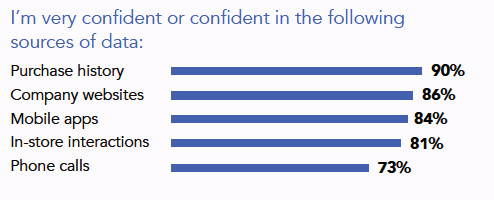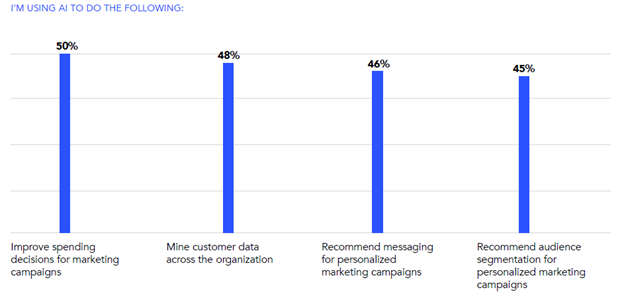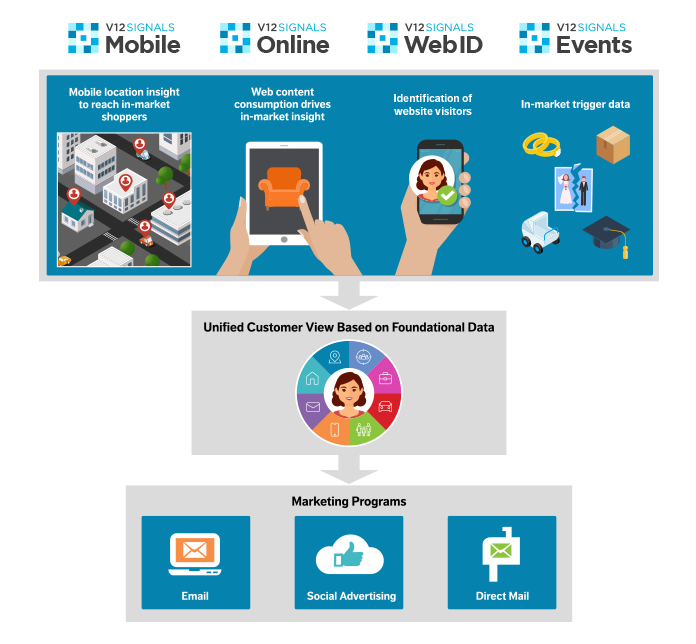Marketing today is all about being data-driven – using data to understand consumers, provide better experiences and personalize offers along the journey. There are many different types of data and classifications of data such as third-party data that can be purchased and data that is inherent to every organization – the first party data every business has on its own customer base.
The Power of First Party Data
While every business may have data, not every company understands how to use it. Data is moving faster, comes from any number of channels, and it can be overwhelming to know what to collect and what is just noise.
However, every marketing data strategy must begin with an organization’s first party data before adding other elements into the mix such as second- or third-party data insights.
In research by Invoca, marketers said they are mostly confident in their first party data.

Marketers also stated they have access to the following types of data:
- 73% – Company websites
- 66% – Mobile apps
- 66% – In-store transactions
- 62% – Purchase history
- 56$ – Phone call
When using data to optimize ad performance, marketers cited several challenges. Data quality and accuracy followed by privacy and security concerns were the areas marketers found most challenging.
Another area of interest for marketers is AI and analytics, with many marketers expressing an interest in doing more with these disciplines to draw better conclusions from their data. Only about half of survey respondents were using AI in their data-driven strategies.
Adding Third-Party Data to the Mix
Third-party data continues to thrive despite concerns over privacy and speculations that it will become obsolete. Much of these criticisms of third-party data is regarding its unreliability. Unfortunately, third party data can get a bad rap when it is unethically sourced or compiled from unknown sources. Brands must always ensure they are using data from a reputable, third-party vendor.
While first party data is without a doubt the most valuable place to start, marketers can’t rely on their first party data alone. Often, these records are missing important contact details such as email address, phone or home address. Or the records become outdated when consumers move and don’t provide their current information. A third-party data vendor can easily update records with correct contact information to ensure brands can continue to communicate and retain its customer base.
Third-party data is extremely valuable for segmenting and personalization. Adding insights such as lifestyle information, demographics, firmographics, hobbies, interests and more can ensure marketers are relating to their target audience with personalized messaging.
With technology advancements and the proliferation of so much data, third-party insights into purchase intent are increasingly available. For example, V12’s product, V12 Signals, can connect brands with consumers in the market for products and services based on their browsing and shopping activity, identification of visitors browsing websites and life event triggers.
When first- and third-party data are used together, marketers can develop rich customer insights to improve the effectiveness and ROI of marketing campaigns.


